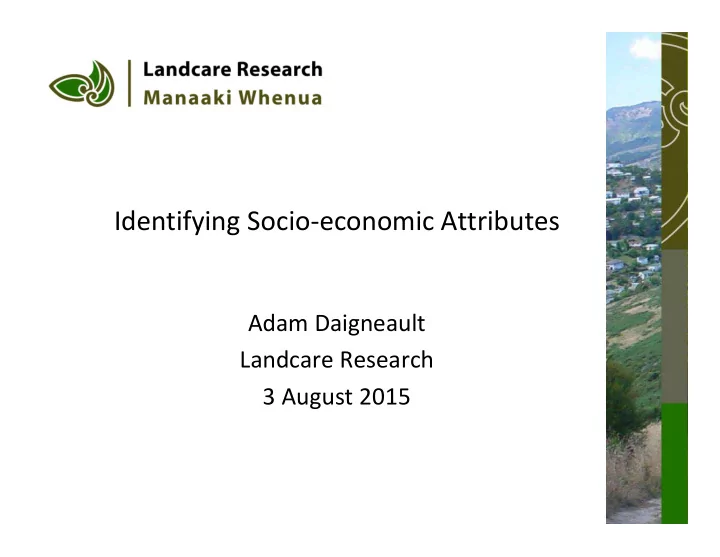

Identifying Socio-economic Attributes Adam Daigneault Landcare Research 3 August 2015
Ruam ā hanga Economic Use, Resilience and Prosperity He taonga te wai, water is life Water sustains our livelihood, water grows our people and communities Reliability of water supply supports our; incomes, employment and innovation, our farming, industry and commercial fishing Sustainable economic use of water brings resilience and prosperity
What is Economics? • Definition: The study of how individuals and societies make decisions about ways to use scarce resources to meet wants and needs – Macroeconomics: Big picture stuff • GDP, employment, trade, etc. – Microeconomics: Individual/firm decision-making • Consumption, production, personal well-being, etc. • It’s all about assessing trade-offs, including opportunity costs (foregone alternatives)
Efficiency & Equity • A big issue in economics is the trade off between efficiency and equity: – Efficiency is concerned with the optimal production and allocation of resources given existing factors of production. • E.g., irrigation consents goes to most productive or profitable use – Equity is concerned with how resources are distributed throughout society • E.g., everybody entitled to access irrigation
Socio-economic Indicators • Gross Domestic Product (GDP) • Production and trade • Employment • Income/Wages • Housing prices • Population, including diversity • Community services (hospitals, schools, etc.) • Policy costs (implementation, capital, opportunity, etc.) • Policy benefits (improved health, recreation, etc.)
Examples of socio-economic attributes for the primary sector • Land and water use • Farm profit • On-farm production and value added goods • Flow on effects to wider community (e.g., jobs, services, etc.) • Policy implementation costs to gov’t and landowners • Environmental and cultural benefits of intervention • Distribution of impacts across community
Recommend
More recommend